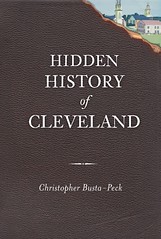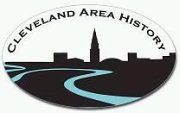
I came across this photograph of the Taft Mansion (now the Taft Museum of Art) in Louis August Weber's 1947 M.A. thesis, Architecture in Cincinnati Before 1845. It is used courtesy of the Ohio State University Book Depository.
Weber's thesis is an impressive work. It includes almost 160 black and white images, mostly original photographs taken by the author. Weber was clearly quite skilled with the view camera - the work appears to be of quite high quality. Further, it serves as a document of many structures that are no longer standing. I'm trying to find a way to justify scanning all of the photographs, and I probably will, for my personal reference. Tying them in to Cleveland area history is a bit more challenging.

I bring up this Cincinnati structure because it reminds me of this image, of the Dunham Tavern and 6611 Euclid Avenue, the seven story industrial building behind it. Both the Dunham Tavern and the Taft Mansion were built at about the same time. The industrial structure seen next to the Taft Mansion remains, providing historical context and illustrating how the city has changed over time. As I've suggested before, it's important that we consider retaining the structure at 6611 Euclid Avenue, as context to the Dunham Tavern Museum.
The Dunham Tavern will be much less impressive as a survivor when we lose the physical manifestation of the changes that it lived through. We, the citizens, own 6611 Euclid Avenue, so it's up to us to let our elected leaders know our position on this matter.
It would surely be quite expensive to rehab - I dont' believe that rehabilitation is necessary. I suggest that an appropriate strategy would be to figure out how to stabilize the structure, so that it can remain a monument both to our early history and to our industrial past.




Try imagining how the Dunham Tavern could proceed within another developmental scenario—as a base for ecologically-informed local greenspace development. What if the north side of Euclid between, say, the 600 and 700 blocks, could be reverted toward an indigenous floral environment? Imagine reintroducing elements of Erie lake plain forest and beach ridge prairie. The process would require some years to gather effect, but imagine approaching the tavern in a landscape similar to that in which it was built! Such a context would equally represent the “changes it has lived through” and better represent the early settler context in which the Dunham arose. Reconstructing local natural environments is an important component for twenty-first century Cleveland. The Dunham Tavern is a logical anchor for re-introducing a localized, historically accurate green landscape. Such development would expand the Dunahm presence and could be inherently sustainable as well as historically significant.
ReplyDeleteRoy, that's a very good point. I think you'll like a story that I have planned for next week.
ReplyDelete